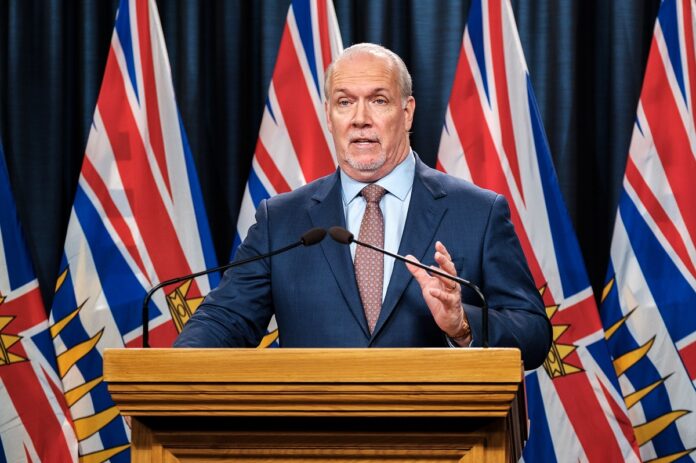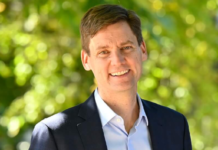THE Province on Tuesday announced its intention to work in partnership with First Nations to defer harvest of ancient, rare and priority large stands of old growth within 2.6 million hectares of B.C.’s most at-risk old-growth forests.
“Forests are a part of who we are as British Columbians. We have a responsibility to ensure the benefits are shared, today and with future generations,” said Premier John Horgan. “Following the recommendations of the Old Growth Strategic Review, we are taking steps to fundamentally transform the way we manage our old-growth forests, lands and resources.”
Logging deferrals are a temporary measure – recommended by 2020’s Old Growth Strategic Review – to prevent irreversible biodiversity loss while First Nations, the Province and other partners develop a new approach to sustainable forest management that prioritizes ecosystem health and community prosperity throughout B.C. This new approach will be based on the recommendations provided in the Old Growth Strategic Review and will recognize that a shift to prioritize ecosystem health is necessary if the forests are to continue to provide essential benefits, such as clean air, clean water, carbon storage, conservation of biodiversity and timber.
Details of these forest stands – mapped and defined by a panel of independent scientific and ecological experts – have been shared with First Nations rights and title holders so they can advise how to proceed on the deferral areas within their respective territories. The Province is requesting that First Nations indicate within the next 30 days whether or not they support the deferrals, require further engagement to incorporate local and Indigenous knowledge, or would prefer to discuss deferrals through existing treaties, agreements and other constructive arrangements. Capacity funding of up to $12.69 million over three years is available to support this process.
To support the deferral process, government will immediately cease advertising and selling BC Timber Sales in the affected areas.
“We’re building a new vision for forest care to better share all the benefits of our forests together, for generations and generations to come,” said Katrine Conroy, Minister of Forests, Lands, Natural Resource Operations and Rural Development. “We are committed to working in partnership with First Nations to make sure we get this right and to supporting workers and communities as we develop a sustainable approach to managing BC’s old-growth forests.”
The Province is also bringing together strategically co-ordinated and comprehensive supports to help forest workers, communities and First Nations with the necessary supports to offset job and economic impacts that may follow new harvest restrictions. Programs will include connecting workers with short-term employment opportunities, education and skills training or funds to bridge to retirement. The Province will also work in partnership with business and communities to develop new supports that will assist rural communities to create jobs through diversified economies, infrastructure projects and innovation in industry.
When the deferral period ends, the newly identified at-risk forests will either be added to B.C.’s 3.5 million hectares of old-growth forests already off-limits to harvesting, or included within new forest management plans.
As per the recommendations of the Old Growth Strategic Review, government will work in partnership with First Nations to provide clarity on the areas of forest that should be protected forever, the areas that may support some harvest under strict management conditions that prioritize ecosystem health, and the areas that can be accessed for sustainable timber management to support workers and communities. The result will be permanent protection for more of B.C.’s most important old growth and more clarity to support investment and jobs.
“A commitment to partnership with First Nations and integrating their perspectives on land is fundamental to facilitating the required paradigm shift in forest management that includes old growth as a key component of ecosystem health,” said Garry Merkel, one of five members of the independent technical panel, and co-author of the Old Growth Strategic Review. “Once temporary deferrals are in place for the most at-risk ecosystems, government can turn toward implementation of the remaining recommendations of the strategic review and developing a new path forward.”
The Province said that there are already some parts of the province, such as the Great Bear Rainforest, where Indigenous Nations are working in partnership with government and industry to diversify management goals. These innovative partnerships demonstrate what can be achieved together and it is its intent to build upon this type of forest management model throughout the province.
“By doing this work, we’re following through with the recommendations from the Old Growth Strategic Review, and our commitment to reconciliation in line with the Declaration on the Rights of Indigenous Peoples Act,” Horgan said.
The Province will provide resources to support First Nations in assessing new data and decisions on deferrals and participating in the development of the Province’s new approach to sustainable forest management. This will allow First Nations and the Province to determine if forest carbon offsets could be used to support the protection of old growth. The Province will also establish a new process to enable individuals and organizations to donate funds to purchase existing timber licences and preserve old-growth stands.

Photo: Twitter
BC Green Party Leader Sonia Furstenau said in a statement: “Government is acknowledging previous miscalculations of B.C.’s old growth inventory and moving forward on the basis of science, and this is a good start. They intend to implement logging deferrals in 2.6 million hectares of old-growth forests, as per the recommendations of the technical advisory panel. Over a year and a half after receiving the Old Growth Strategic Review, this is an essential and overdue first step.
“We have been calling for action on old-growth for years as logging of these forests has continued. I’m pleased to see that maps and information about the remaining old-growth inventory will be publicly released. British Columbians deserve this transparency – but there’s still more to do.
“This year, the actions at Fairy Creek became the largest act of civil disobedience in Canadian history. Climate change and wildfires ravaged the province’s communities and forests. Deferrals are important – but they must be paired with significant funding, and informed by a long-term vision for the paradigm shift that is necessary if we are going to truly manage forests for ecosystem health in BC.
“Questions remain about funding for transition programs, and there is a lack of clarity on how these deferrals will lead to meaningful protection for forests and communities.”
Adam Olsen, MLA for Saanich North and the Islands and a member of Tsartlip First Nation, added: “This government did not properly consult with First Nations prior to making these announcements, and now they’re giving them thirty days to indicate whether or not they support deferrals,” said “I’m relieved to see funding tied to this tight timeline, but so far, First Nations have been very clear that they do not feel adequately heard on forest management in this province.
“Government is continuing old habits by leaving First Nations out of the loop and then rushing them through a significant decision-making process. First Nations deserve – and are legally entitled to – full consultation as the rights holders of their own territories.”













